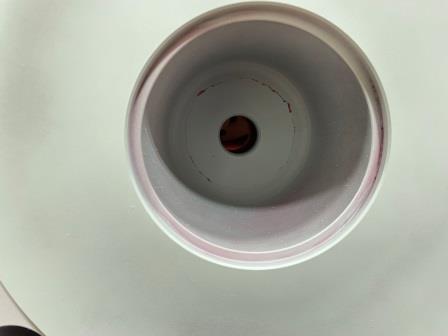Liquid Penetrant Testing Application
This article provides information about the liquid penetrant testing application. This test detects the surface defects such as crack (longitudinal, transverse, crater) in welding seams, or weld surface porosity. You may first review step by step dye penetration test article. The liquid penetrant test cannot detect under-surface defects such as internal weld porosity, weld lack of sidewall fusion, etc.

Liquid Penetrant Testing Application on Welding
This test is used to detect the hot crack which can happen during solidification process of deposited weld metal, and it might happen in weld metal or in weld heat affected zone. The surface lack of fusion also can be identified by this test.
The surface porosity is a common surface defect that can be found visually and more accurately by dye penetration test. The acceptance criteria for the liquid penetrant test for welding have been addressed on the ASME Code Section VIII Div 1 Mandatory appendix 8.
This part covers the criteria for both pressure vessels and rotating equipment such as pumps and compressors. Please note the API codes such as API 610 and API 617 do not address the acceptance criteria for Penetrant test directly and normally is referred to ASME.
Liquid Penetrant Test Application on Casting
The casting surface porosity, surface shrinkage, hot tear and cold shut can be detected by liquid penetrant inspection. The acceptance criteria have been addressed in ASME Section VIII Div 1. Mandatory Appendix 7.
This acceptance criteria covers both fixed equipment, e.g., pressure vessels, heat exchangers, and rotating equipment, e.g., pumps, compressors, etc. The ASME Section VIII is pressure vessel code, but API codes such as API 610 (for Pumps) or API 617 (for the compressor) refer the users to the ASME code for acceptance criteria.
Liquid Penetrant Testing Application on Forging
The forging surface detects are Laps and Bursts which both can easily be identified by performing a liquid penetrant test.
Liquid Penetrant Testing on Plate
This test is used to detect lamination. This is a common defect that happens in plate material. This can be detected if the lamination is open to the surface.
Free newsletter!
Sign up to receive my monthly newsletter covering all the latest courses and updates.




New! Comments
Have your say about what you just read! Leave me a comment in the box below.